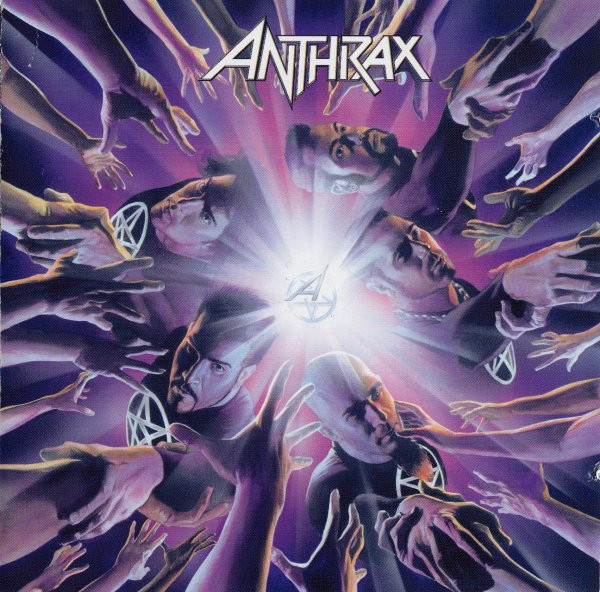Though I consider myself an Anthrax fan, I’ve woefully neglected the John Bush years almost entirely. After playing with Los Angeles-based band Armored Saint from 1982-1992, Bush replaced singer Joey Belladonna in 1993 for the album Sound of White Noise. He stayed with the band until 2011’s Worship Music, when Belladonna returned. In the interim, Anthrax released a total of four studio albums with Bush, none of which I’ve given a proper listen.
Armored Saint, a wonderful band in its own right, meanwhile, largely went on hiatus between 1991 and 2000, when Bush returned to the band—singing for both Anthrax and Armored Saint for a short time. (This timeline is based on record release dates; recording dates and live performances might tell a different story. And another singer, Long Island metal head Dan Nelson, intervened briefly before Worship Music; Belladonna re-recorded his vocals.)
So listening to this record is similar to listening to Anthrax for the first time all over again. It’s a very different band. Not only is Bush’s singing style different from Belladonna’s vocals—long an attraction for me—the band’s approach to music is different when performing with Bush. While earlier Anthrax records—even those with original singer Neil Turbin and earlier band members Dan Spitz and Dan Lilker (who went on to S.O.D., Nuclear Assault, and an online radio show with Gimme Metal)—were more thrash metal oriented, with Bush as front man, Anthrax is much more groove oriented, what some might call alternative metal, “power groove,” or even straight-forward hard rock. The band is older, perhaps wiser. Released after Sept. 11, 2001, We’ve Come for You All is decidedly less fun than the records with which I’m more familiar.
The music is still ably played. Bush’s vocals are athletic and forceful, and the tried-and-true combination of Frank Bello on bass, Charlie Benante on drums, and Scott Ian on rhythm guitar continues to impress and delight. The band was also joined by Rob Caggiano on lead guitar for the first time; he later went on to play with Cradle of Filth and Volbeat. Several guests also appear on the record, including Dimebag Darrell of Pantera, Anthony Martini of rap metal act E-Town Concrete, and Roger Daltrey—though minimally.
Lyrical content touches on the topics of persistence, struggle, independence, love, reciprocity, nostalgia, cars, and betrayal. Despite a couple of potential pop culture references—”Black Dahlia” lightly addresses the 1947 Los Angeles murder case, perhaps from the point of view of the killer, and “Cadillac Rock Box” is more about driving than the car make specifically—the record is light on what used to be an Anthrax hallmark. 1987’s Among the Living included songs based on Stephen King’s novel The Stand and Judge Dredd comics, for example. That said, celebrated comic book artist Alex Ross painted the cover—a stoic group portrait of the band and its fans, perhaps, but not Ross’s best work. It’s good to know that Ian and the band still have an interest in comics.
While it might not be the Anthrax I know and love, it’s still Anthrax. And that means something. Many critics reviewed the record positively—noting its more radio-friendly approach—and the record reached 122 in the U.S. Billboard 200. Yet while I don’t quite like the idea of ignoring two decades of a band’s recorded output, I much prefer Anthrax’s records up through Persistence of Time and from Worship Music onward. I also much prefer listening to Armored Saint, so it can’t just be Bush. Regardless, call it the Belladonna Effect; there might be some heavy metal alchemy at play. I’ll have to spend time with Sound of White Noise, Stomp 442, and Volume 8: The Threat Is Real to see if that preference holds.





No comments:
Post a Comment